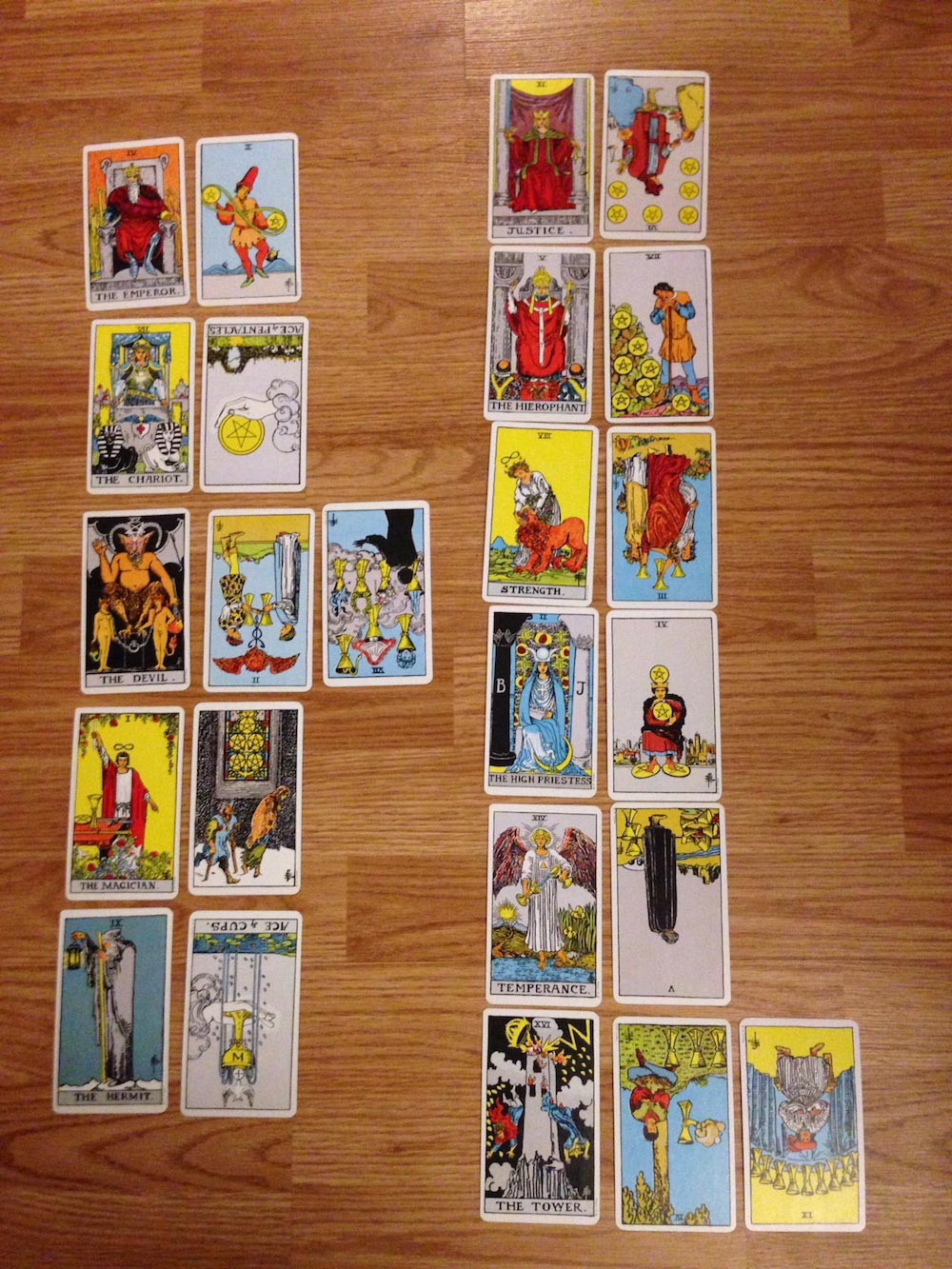If you enjoy MAZE, there’s a good chance you are also interested in the Tarot – both are an irresistible stew of images, symbols, text, and numbers, spiced with myth, mystery, magic, and menace while offering rich possibilities for interpretation. I caught the Tarot bug early and bought my first deck at the age of 10 from a New-Agey store, dutifully storing it in black silk to protect it from “harmful vibrations” when I wasn’t torturing friends and family with inept readings.
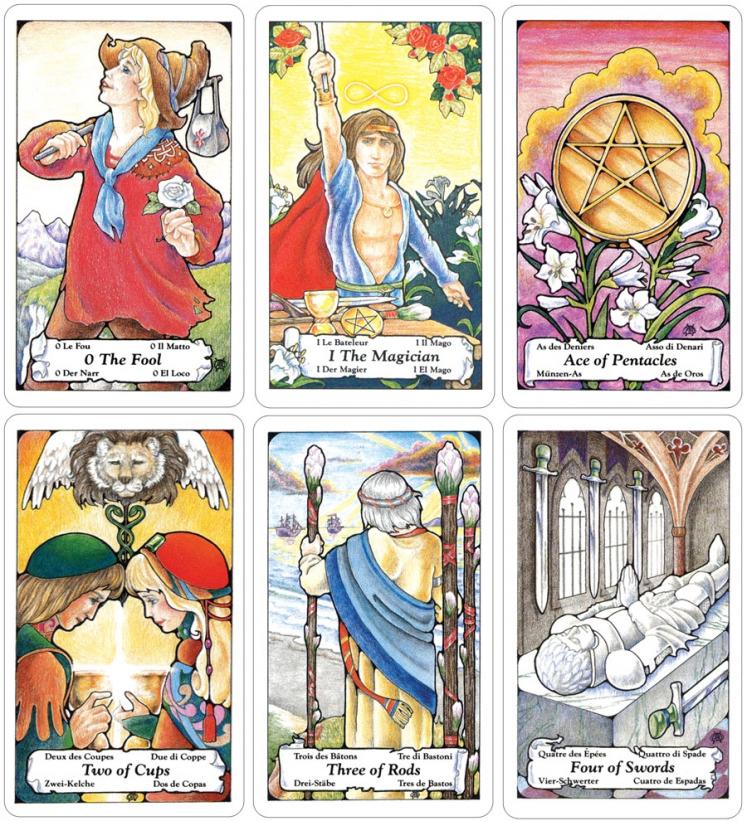
Over the years, I came to lose my childhood belief in any real predictive magic the Tarot might have, but I never quite lost interest in the cards, picking up a new deck or Tarot book here and there, and occasionally attempting readings. Magic or not, the Tarot does have value in decision making: as a ritualized way of approaching a problem or a question, the cards can be helpful in focussing your thinking. Doing a reading for yourself or someone else can force you to think carefully and deeply about a situation and to consider it from different perspectives, working through the consequences of possible solutions and obstacles suggested by the cards.
And even if you don’t use them for readings, Tarot cards are fascinating just for the artwork. People become obsessed with collecting Tarot decks-I have four or five myself and that’s nothing compared to some people. There are a lot of ugly or silly or lazy decks out there, but there are also many that are gorgeous and innovative. (Dali did a wonderful deck, for example, casting himself as The Magician, of course.)It’s exciting to see how different artists have interpreted the familiar scenes and meanings of the cards, a thrill similar to what you feel when you listen to a cover of a beloved song that makes it beautiful in a new way.
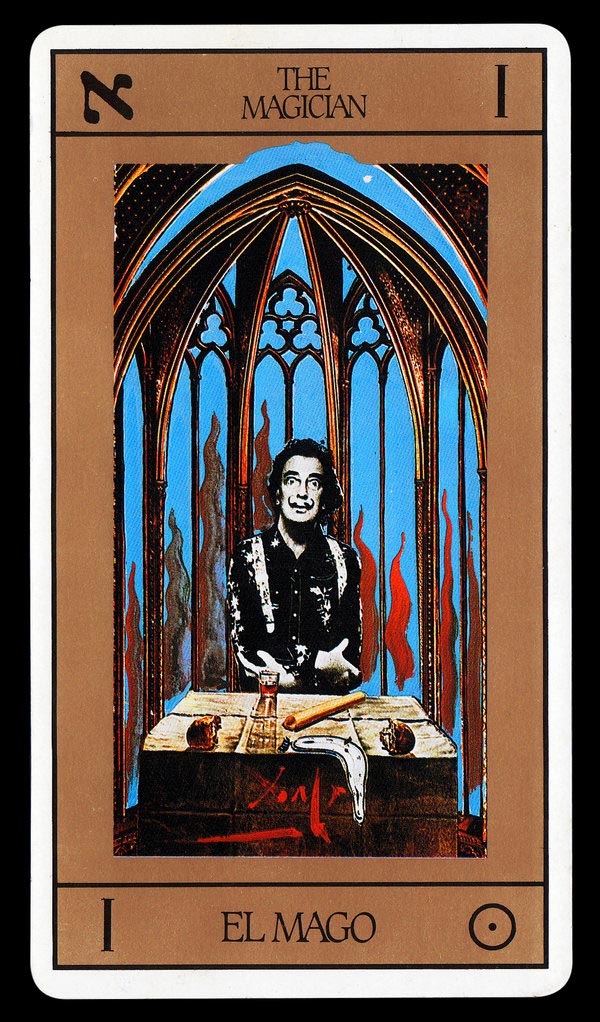
I could ramble on for quite some time about Tarot, but we’re here to talk about MAZE. In the chat and on the episodes people have spent a fair bit of time discussing the significance and validity of various Tarot references throughout the Maze. (Some of us even chose cards to go with our bios – can you figure out the reasons behind the choices?) There’s no question – Tarot is part of the Maze. But, as with most things around here, how much is real and what it all means is up for debate…
Room 20: The Tower
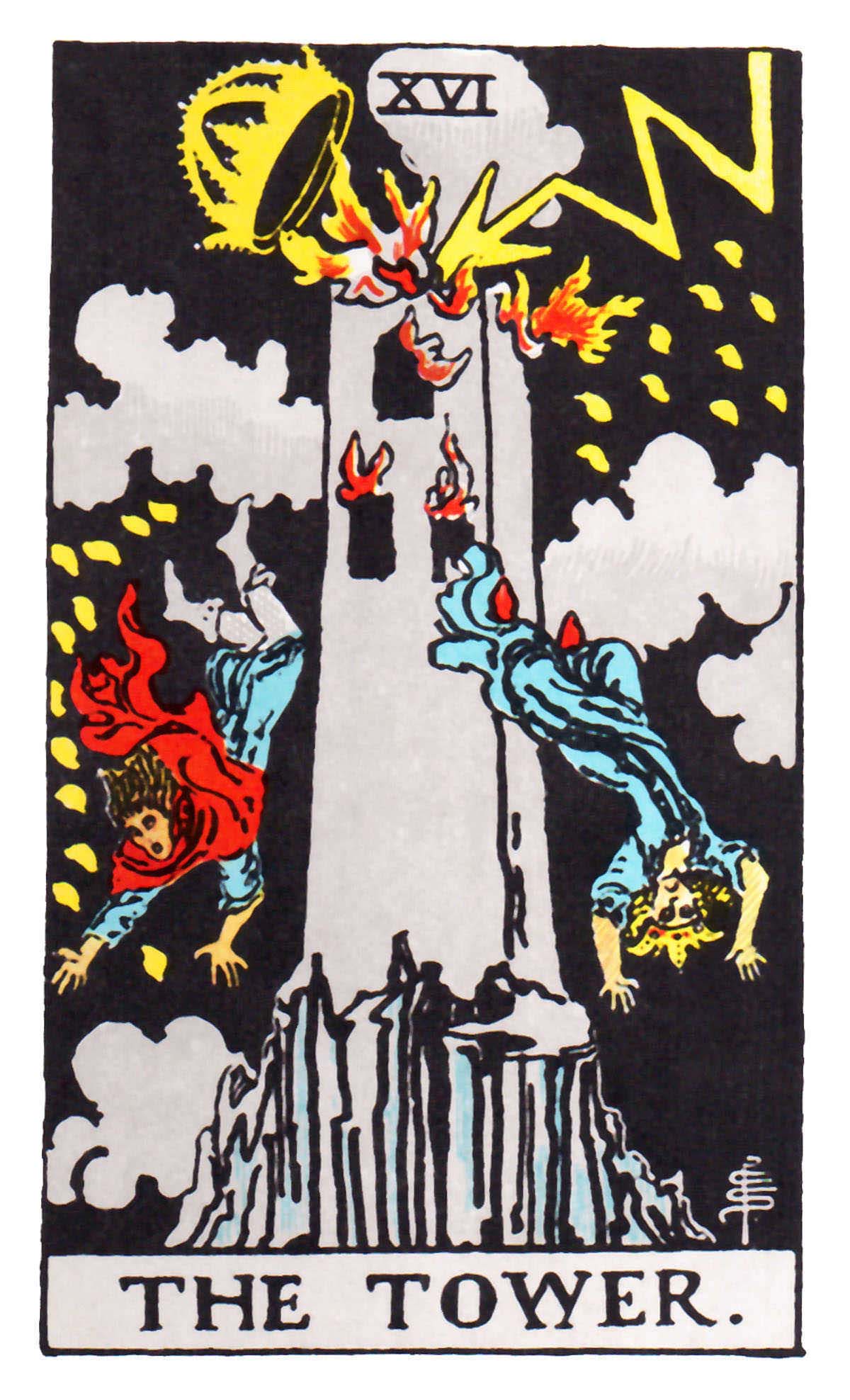
The distinctive image of a lightning-struck tower in Room 20 is the most obvious and indisputable reference to a Tarot card in the Maze. Interpretations of The Tower and its 3D twin reclining in the tartan-covered chair are many; some are better than others. The most compelling observation is that The Tower is the sixteenth card of the major arcana, and that tells you that if you get to Room 20 you are at the end of the sixteen-step path. To me, this is the most important message for Room 20 to convey. Some may quibble and say that Room 20 actually represents the fifteenth step, but I say in the Maze, 16 = end of Path, and the 16th card in a room sends a pretty clear message. It’s beside the door to Room 1, so if you want, it can be telling you that taking door 1 from here represents your sixteenth step if you’ve been going the right way. If not-try again.
Several interpretations involve the closed and open doors of the two towers. The tower reclining in the comfy chair has a closed door, while the door on The Tower is open. Meaning-wise, The Tower is one of the worst cards in the Tarot, representing calamitous change. Connecting this meaning to the open door, and the idea of safety to the closed door on the other tower a possible reading is, “open doors are dangerous, closed doors are safe.” I like this interpretation because to me, the only correct choice in here is to go back to 1, regardless of where you are in your journey, and door 1 is the closed door. If you go to 27 you get stuck in the Loop, and if you go to 5 you have a 50% chance of ending up in the Trap and will miss the crucial ATLAS part of the riddle, even if you manage to pick door 30.
There is another interpretation of the open and closed doors on the Abyss, which you can read here.
Room 27: The Hermit
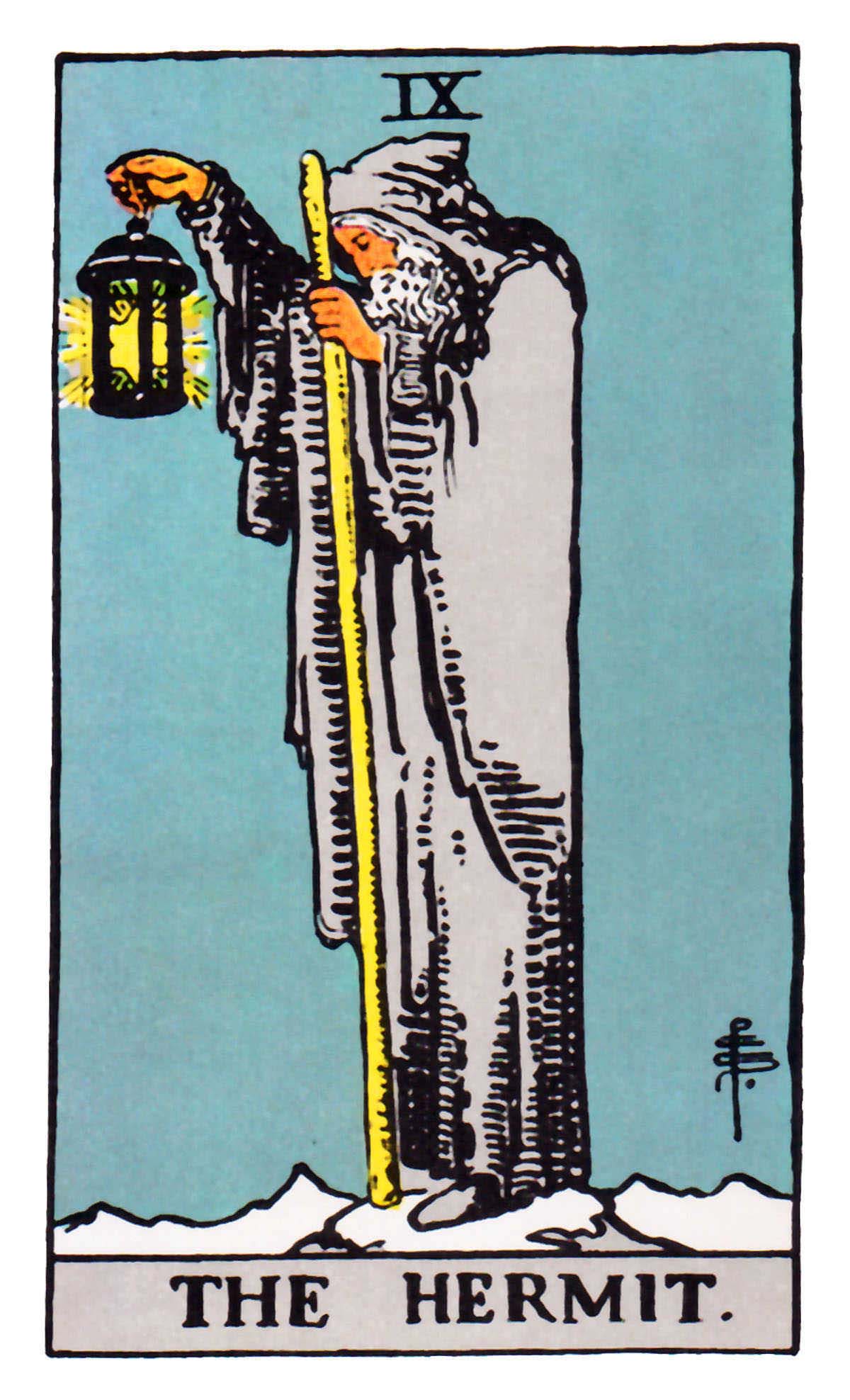
Or should I say the anti-Hermit? This Tarot reference has been discussed more than any of the others. The solution on the Abyss, which I like, depends on the statue with the lantern on door 9 clearly referencing The Hermit. I think he does because a) we are in a room that references cards, making you think of Tarot by association; b) the Hermit is the ninth card of the Major Arcana, matching the door number; and c) the Hermit is commonly depicted as carrying a lantern.
The obvious problem is that the statue itself doesn’t look anything like The Hermit. There are several key differences: the statue is young not old, blind not sighted; he isn’t carrying his lantern (and could not see by its light anyway); he’s wearing the garb of an ancient Greek, not Gandalf-robes; and he seems to be sinking into the ground instead of standing on a mountaintop. Given that one of the meanings of the card is wisdom, the point of Manson making us think of the card while also evoking its opposite is to signal that to take this door would be foolish. Of all the figures in the Tarot, this statue probably resembles The Fool most, strengthening this interpretation. The lantern, though, seems to be The Hermit’s true lantern, and lights the way for us to door 13.
As I said, I like this, but there are many who don’t, surprise surprise. Beelz posited this explanation in the Room 27 episode, and everyone seemed pretty keen on it then, but a year later most were not so thrilled with the idea when it came out of one of White Raven’s hints. Take a look at the initial and subsequent discussions on The Abyss and decide for yourself!
An interesting observation is that you can get to Room 27 from Room 20, so perhaps Manson also saw these references as a red herring trail for people trying to find interroom connections.
Other Tarot Possibilities *
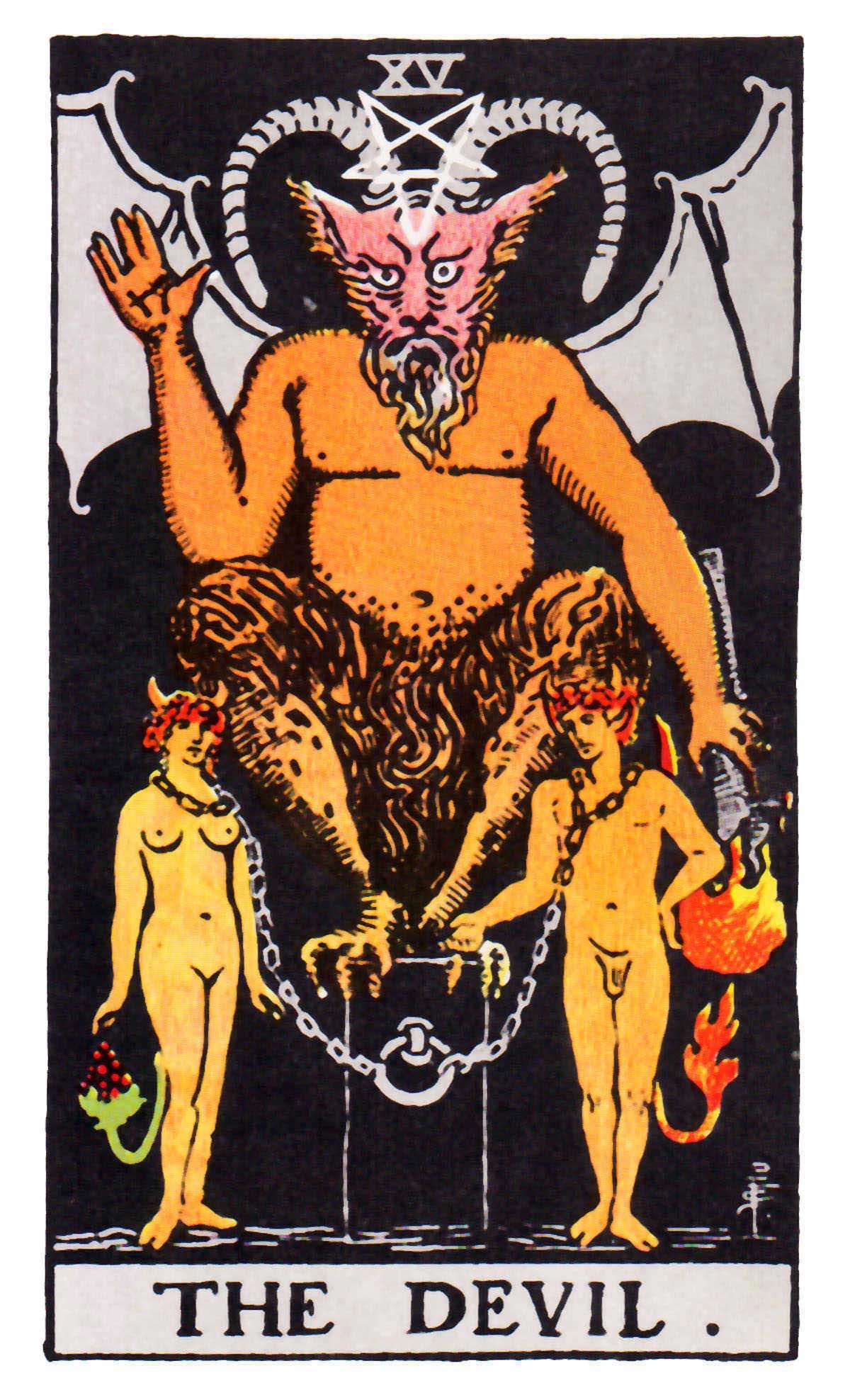
At one point Vincent went through and made a list of a bunch of symbols and objects that appeared both in the Maze and in Tarot. I can’t seem to find that list now but there are quite a few: staves, angels, sun, moon, stars, clarions, devils, banners, chariots… that’s just a few off the top of my head. These are mostly common symbols and objects, so it’s hard to know if there was an intended Tarot connection or not.
Two references that do seem to have some legs are found in Rooms 19 and 38. Room 19, the outdoor room in which we meet Manson and the Sun-Man, and in which the brightness of the sunlight is emphasized, might refer to The Sun, which is the 19th trump of the Tarot. I pointed out a bunch of other similarities and connections in that room, mostly silly, which you can read here. It doesn’t seem to really help with a solution. In Room 38, the face above the door and the two unfinished figures on the side seem to evoke the composition of trump 15, The Devil. Again, doesn’t seem to help much. Could perhaps just be another trap/Minotaur reference, since the two human figures in the Rider-Waite deck (the most commonly known one and the one shown here), are chained to the pedestal on which the horned part-human part-beast devil is squatting.
*UPDATE (10/31/2016): How could I have forgotten Room 13 and its possible references to the 13th trump, the Death card? I don’t know, but I did. This possible reference is especially interesting considering it continues the Room 20 – Room 27 Tarot trail. Never fear, you can read all about that connection and more in this, the longest-ever Abyss post, written (of course) by Vincent.
A Reading
Well! All this thinking about the Tarot put me in the mood to do a reading for an absent friend. I decided to try out a new method for laying out the cards, but I’m having some trouble interpreting them. Here they are-can you help?
While you’re puzzling it out, have a listen. This doesn’t have anything to do with the reading, but it’s on theme. 🙂

